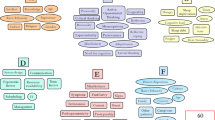Abstract
The control questions technique (CQT) is the most widely used method of psychophysiological detection, in spite of its questionable scientific status and the lack of sufficient empirical basis. The goal of this paper is to account for the tremendous popularity of the CQT, and to present a theory describing how decisions and conclusions are reached within the typical CQT-interrogation process. It is claimed that the examiner starts with ana priori hypothesis derived from background information and from prior interactions with the examinee. The test-specific information is then used to test thea priori hypothesis, but this process is influenced by the confirmation bias. The complexity of the information available to the examiner coupled with the lack of well-defined quantification and integration rules allow the examiner to overweigh confirming evidence and to disregard disconfirming cues. This description may be applicable to several other pseudoscientific methods. The implications of the present theory for CQT polygraphy are discussed and comparisons with other purported applications of psychology are made.
Similar content being viewed by others
References
Backster, C. (1963). Polygraph professionalization through technique standardization.Law and Order, 11, 63–64.
Barland, G.H. (1975).Detection of deception in criminal suspects: A field validation study. Ph.D. Dissertation, University of Utah.
Ben-Shakhar, G. (1989). Non-conventional methods in personnel selection. In P: Herriot (Ed),Handbook of Assessment in Organizations: Methods and practice for recruitment and appraisal (pp. 469–485). Chichester: John Willy & Sons.
Ben-Shakhar, G. (1991, in press). Future prospects of psychophysiological detection: Replacing the CQT by the GKT. In J.R. Jennings, P.K., Ackles and M.G.H. Coles (Eds.),Advances in Psychophysiology, Volume 4. Greenwich, Conn: JAI Press.
Ben-Shakhar, G., Bar-Hillel, M., Bilu, Y., Ben-Abba, E., & Flug, A. (1986). Can graphology predict occupational success? Two empirical studies and some methodological ruminations.Journal of Applied Psychology, 71, 645–653.
Ben-Shakhar, G., Bar-Hillel, M., & Lieblich, I. (1986). Trial by polygraph: Scientific and juridical issues in lie detection.Behavioral Science and the Law, 4, 459–479.
Ben-Shakhar, G. & Furedy, J.J. (1990).Theories and applications in the detection of deception: A psychophysiological and international perspective. New York: Springer-Verlag.
Chapman, L.J. & Chapman, J.P. (1967). Genesis of popular but erroneous diagnostic observations.Journal of Abnormal Psychology, 72, 193–204.
Chapman, L. J. & Chapman, J. P. (1969). Illusory correlation as an obstacle to the use of valid psychodiagnostic signs.Journal of Abnormal Psychology, 74, 271–280.
Cutrow, R.J., Parks, A., Lucas, N., & Thomas, K. (1972). The objective use of multiple physiological indices in the detection of deception.Psychophysiology, 9, 578–588.
Dawes, R.M. (1979). The robust beauty of improper linear models in decision making.American Psychologist, 34, 571–582.
Einhorn, H.J. & Hogarth, R.M. (1979). Confidence in judgment: Persistence of the illusion of validity.Psychological Review, 85, 395–416.
Elaad, E. & Ben-Shakhar, G. (1989). Effects of motivation level and verbal response type on psychophysiological detection in the guilty knowledge test.Psychophysiology, 26, 442–451.
Employee Polygraph Protection Act of 1988,U.S. Congress, Report 100-659.
Epstein, S. (1986). Does aggregation produce spuriously high estimates of behavior stability?Journal of Personality and Social Psychology, 50, 1199–1210.
Horvath, F.S. (1977). The effects of selected variables on interpretation of polygraph records.Journal of Applied Psychology, 62, 127–136.
Jones, E.E. & Goethals, G. (1972). Order effects in impression formation: Attribution context and the nature of the entity. In E.E. Jones, et al., (Eds.),Attribution: Processing the causes of behavior. Morristown, N.J: General Learning Press.
Kircher, J.C. & Raskin, D.C. (1988). Human versus computerized evaluations of polygraph data in laboratory setting.Journal of Applied Psychology, 73, 291–302.
Lykken, D.T. (1974), Psychology and the lie detection industry.American Psychologist, 29, 725[196]739.
Lykken, D.T. (1978). The psychopath and the lie detector.Psychophysiology, 15, 137[196]142.
Lykken, D.T. (1981).A Tremor in the blood: Uses and abuses of the lie detector. New York: McGraw-Hill.
McDaniel, M.A., & Jones, J.W. (1986). A meta-analysis of the validity of the employee attitude inventory theft scales.Journal of Business and Psychology, 1, 31–50.
Meehl, P. (1955).Clinical versus statistical prediction. Minneapolis, MN: University of Minnesota Press.
Mischel, W. & Peake, P.K. (1982). Beyond deja vu in the search for cross-situational consistency.Psychological Review, 89, 730–755.
Neter, E. & Ben-Shakhar, G. (1989). The predictive validity of graphological inferences: A meta-analytic approach.Personality and Individual Differences, 10, 737–745.
Nisbett, R. & Ross, L. (1980).Human inference: Strategies and shortcomings of social judgment. Englewood Cliffs, N.J.: Prentice Hall.
Patrick, C.J. & Iacono, W.G. (1989). Psychopathy, threat, and the polygraph test accuracy.Journal of Applied Psychology, 74, 347–355.
Podlesny, J. A. & Raskin, D. C. (1977). Physiological measures and the detection of deception.Psychological Bulletin, 84, 782–799.
Podlesny, J. A. & Raskin, D. C. (1978). Effectiveness of techniques and physiological measures in the detection of deception.Psychophysiology, 15, 344–359.
Rafaeli, A., & Klimoski, R.J. (1983). Predicting sales success through handwriting analysis: An evaluation of the effects of training and handwriting sample context.Journal of Applied Psychology, 68, 212–217.
Rushton, P. J., Murray, H. G. & Erdle, S. (1987). Combining trait consistency and learning specificity approaches to personality, with illustrative data on faculty teaching performance.Personality and Individual Differences, 8, 59–66.
Sackett, P.R., & Harris, M.M. (1984). Honesty testing for personnel selection: A review and critique.Personnel Psychology, 37, 221–245.
Sawyer, J. (1966). Measurement and prediction, clinical and statistical.Psychological Bulletin, 66, 178–200.
Saxe, L., Dougherty, D., & Cross, T. P. (1985). The validity of polygraph testing: Scientific analysis and public controversy.American Psychologist, 40, 355–366.
Snyder, M., & Swann, W.J., Jr. (1978). Behavioral confirmation in social interaction: From social perception to social reality.Journal of Experimental Psychology, 14, 148–162.
Thackray, R. I. & Orne, M. T. (1968). A comparison of physiological indices in detection of deception.Psychophysiology, 4, 329–339.
Wason, P.C. (1968). On the failure to eliminate hypotheses—A second look. In P.C. Wason & P.N. Johnson-Laird (Eds.).Thinking andreasoning. Harmondworth, Middlesex: Penguin.
Author information
Authors and Affiliations
Rights and permissions
About this article
Cite this article
Ben-Shakhar, G. Clinical judgment and decision-making in CQT-polygraphy. Integr. psych. behav. 26, 232–240 (1991). https://doi.org/10.1007/BF02912515
Issue Date:
DOI: https://doi.org/10.1007/BF02912515




